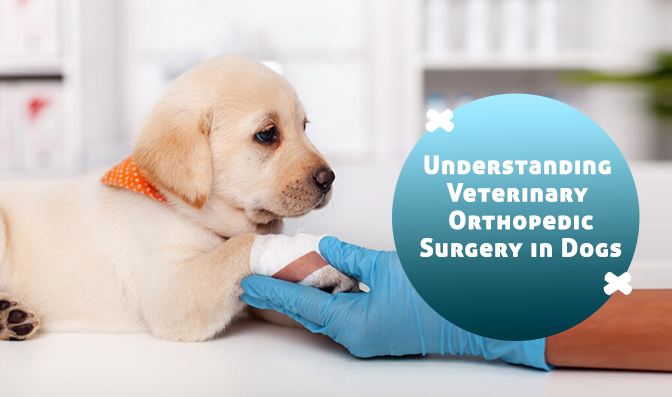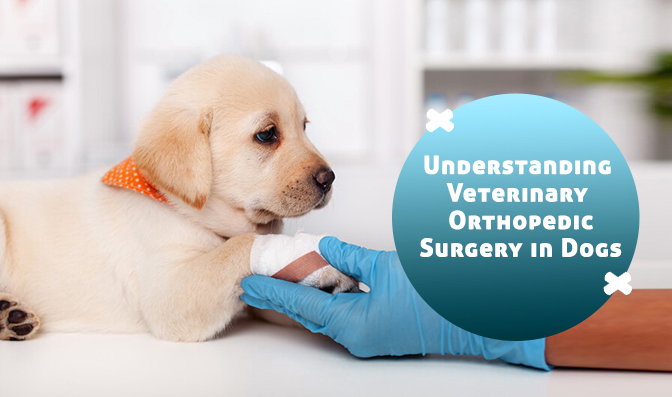Just like humans, dogs too, go through some of the most hurtful illnesses that only subside with surgery and orthopedic surgery is one such ailment. Such ailments might be as a result of age, trauma, a disease, an infection, or may be inherited.

What is veterinary orthopedic surgery?
In simple terms, orthopedic surgery is a surgical process for musculoskeletal anomalies that mostly involves bones, muscles, joints, spines, or ripped ligaments. The surgical process helps broken bones/ muscles/ ligaments to line up and fix to their normal or close to their possible normal.
When to see an Orthopedic Surgeon?
If you see any of the following signs in your dog, it may be an indication of an abnormality that immediately needs to be addressed and requires a consultation from an expert:
- Walks/runs in a different manner than usual
- Stresses more on either leg or favors one leg over the other,
- Finds it difficult standing up
- Reluctant or slow to move
Vet Consultation
Once you see one and/or more above-mentioned symptoms in your dog, rush to the vet. The veterinarian will decide whether to go for a medicinal route or surgery depending on the severity of the illness. But more often than not, medicines will provide only temporary relief and will have long-term adverse effects; whereas orthopedic surgery can be the prime solution to your dog’s healthier recovery from the ailment.
Common orthopedic surgeries in dogs:
- Bone fractures
- Ripped tendons or ligaments
- Patella luxation
- Dislocation of joints
- Hip and Elbow dysplasia
- Osteoarthritis/Rheumatoid arthritis
- Inherited (Congenital) diseases
Pre-Operative Procedures
When the vet determines the surgery, the surgeon will roll-out a complete pre- surgical and post-surgical plan that starts with a complete physical examination of your canine, including its medical history. The vet then performs several preoperative diagnostic tests to rule out any underlying illness.
What happens during the orthopedic surgery?
- Once your dog is taken to the surgery room, the orthopedic surgeon will follow the standard surgery plan that includes anesthetic protocol.
- The animal is given a light sedative that calms it down and relieves the pain. Dog kennel is prepared with enough warmth and comfort. From this point till the time surgery is done, the animal is closely monitored.
- Once a sedative relaxes the animal, IV fluids are administered to maintain their blood pressure, and prevent dehydration during surgery.
- A flexible endotracheal tube is inserted to aid breathing and control anesthesia. Monitoring tools such as electrocardiogram, blood pressure cuff, pulse oximeter are placed.
- Once the surgery is performed, the canine is moved to the recovery room where it is closely observed until it achieves 100% consciousness.
- As the dog is stabilized, and all the vitals are settled, the veterinary surgeon discharges the animal with the necessary postoperative recommendations and treatments for your four-legged companion’s speedy recovery.
Post-Operative Care
After your four-legged companion goes through all the pain and discomfort associated with surgery, it is critical to provide them with the necessary care and follow tips mentioned-below to help them get to their normal lives.
- Follow vet’s directives
- Restrict all physical activities
- Manage pain with vet-prescribed treatments (pain killers, antibiotics)
- Take special care of the incision site and prevent dogs from licking or chewing the surgical area
- Re-introduce physical movements and gradually get them back to normal


